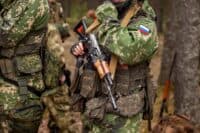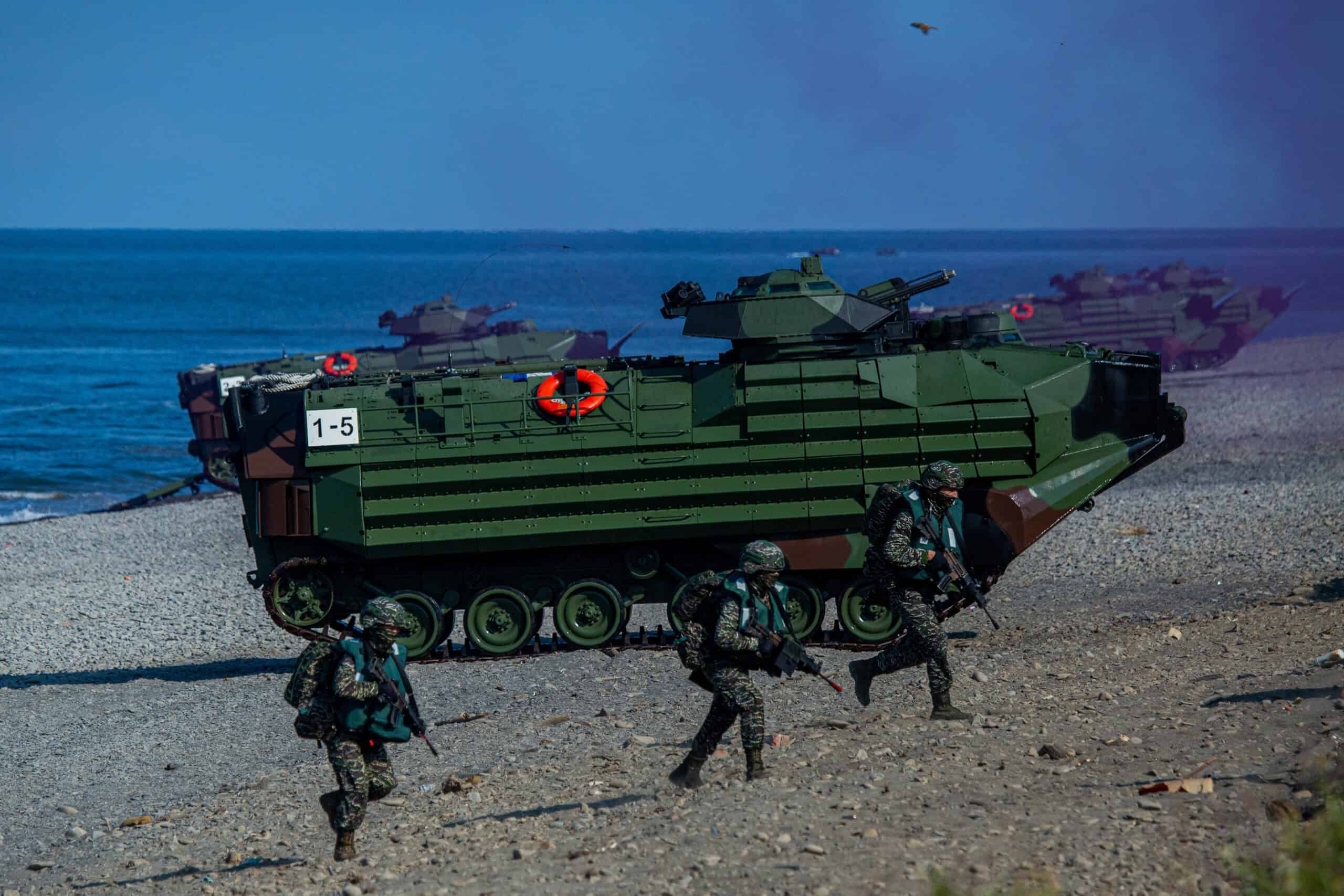
Beijing reacted angrily to the election of Lai Ching-te as President of the Republic of China (Taiwan) in 2024. The People’s Republic of China considers Lai a dangerous separatist leading a wayward province that should be brought back into the fold. The animosity between Taipei and Beijing goes back almost a century. The outbreak of the Chinese Civil War in the 1920s was the igniting incident of a dispute that persists into the present.
With tensions nearing an all-time high, this article will provide an accessible overview of the long and complex history between the Republic of China and the People’s Republic of China and what might happen next.
Why This Matters
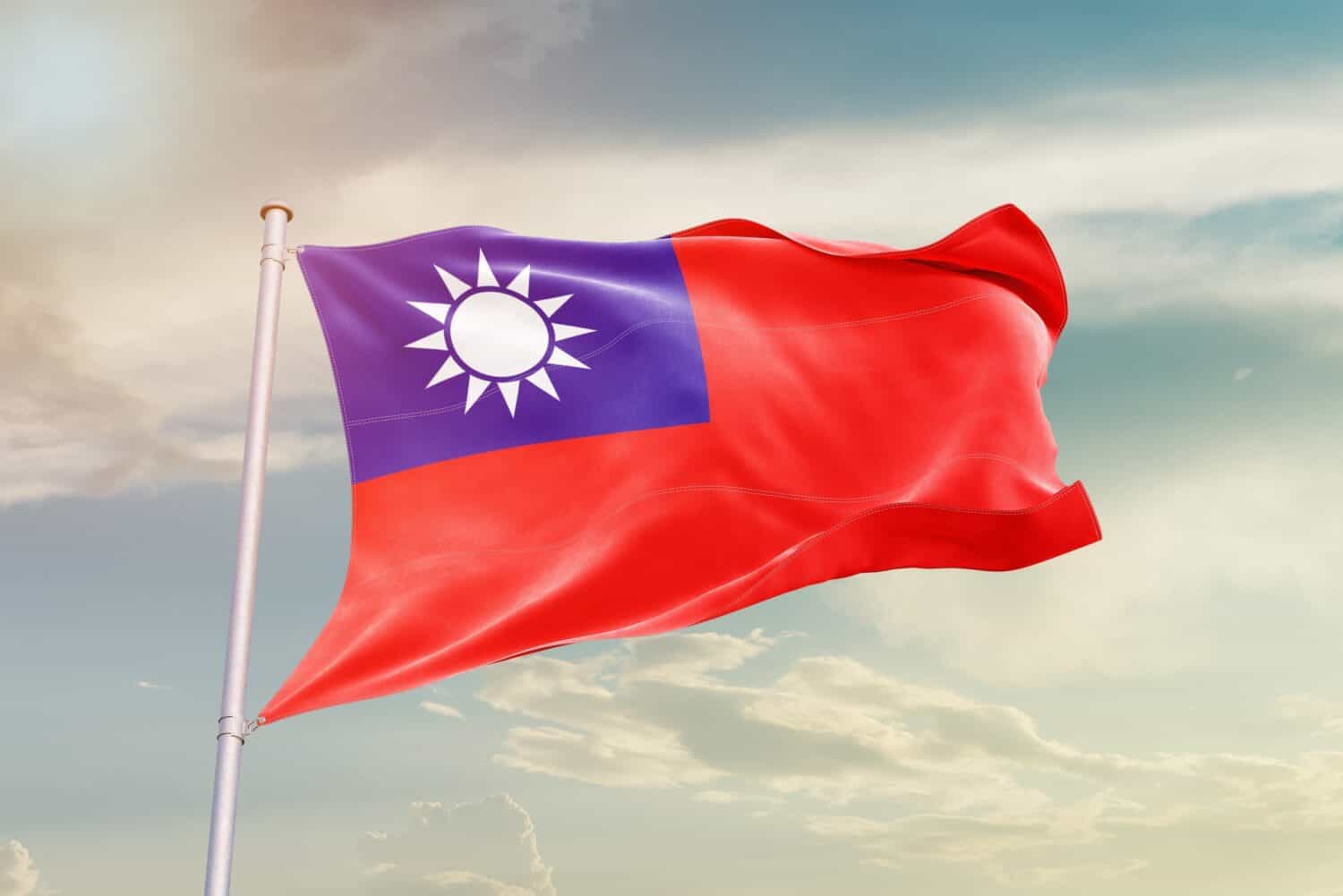
Most summaries of the China-Taiwan situation start in 1949. However, the origins of the dispute stretch much further back. By tracing the conflict back to its roots, we can better understand the present and anticipate the future.
1912: The Chinese Revolution
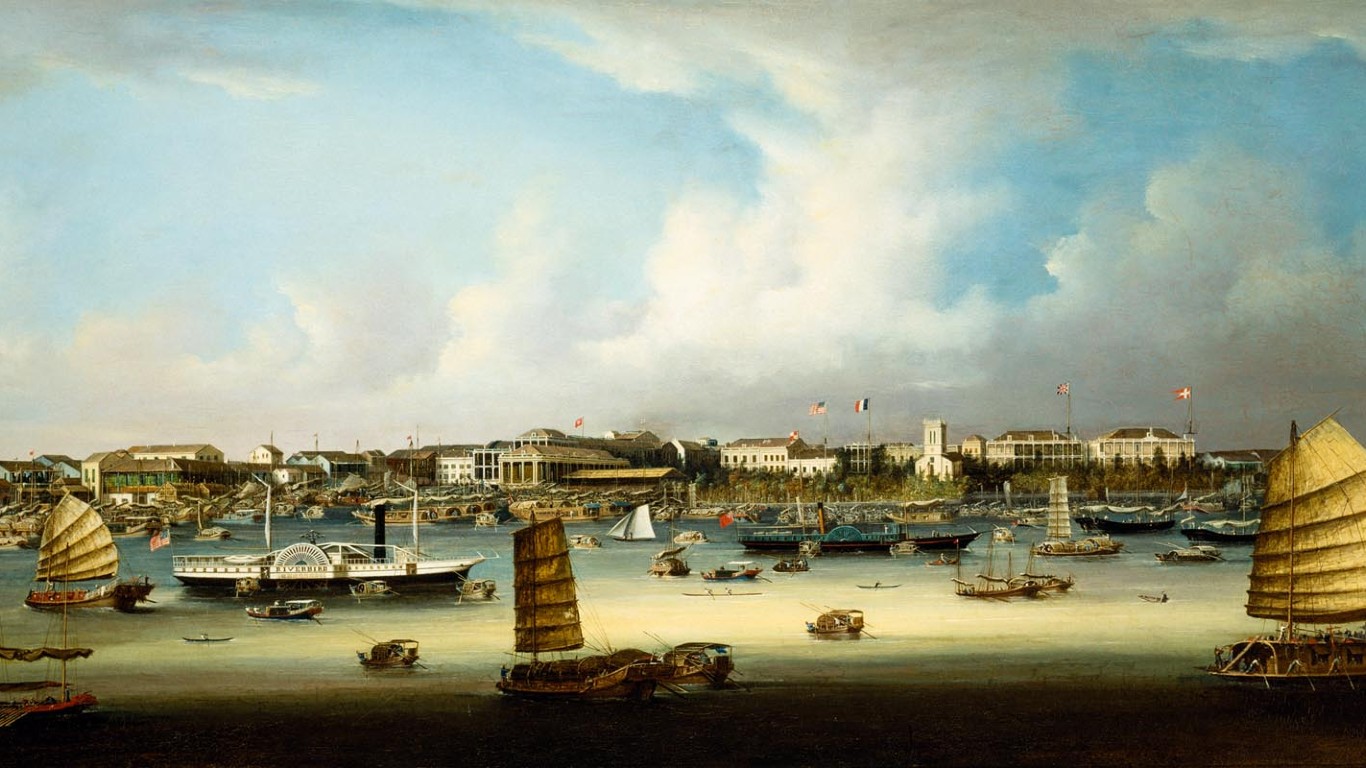
The Qing dynasty collapsed in October 1911 after a nationalist revolt in Wuchang. The revolutionaries declared the Republic of China with Sun Zhongshan (also known as Sun Yat-sen) as the first president. The new republic had weak foundations and the veteran commander Yuan Shinkai took power in March 1912. Yuan went further in 1915 when he called for a National Representative Assembly. All 1,993 representatives voted in favor of making him emperor. The restoration of the monarchy lasted only 83 days and the uncrowned “emperor” died in June 1916, leaving an almighty mess behind. China was fractured into several autonomous areas controlled by warlords.
1920s: Allies to Enemies
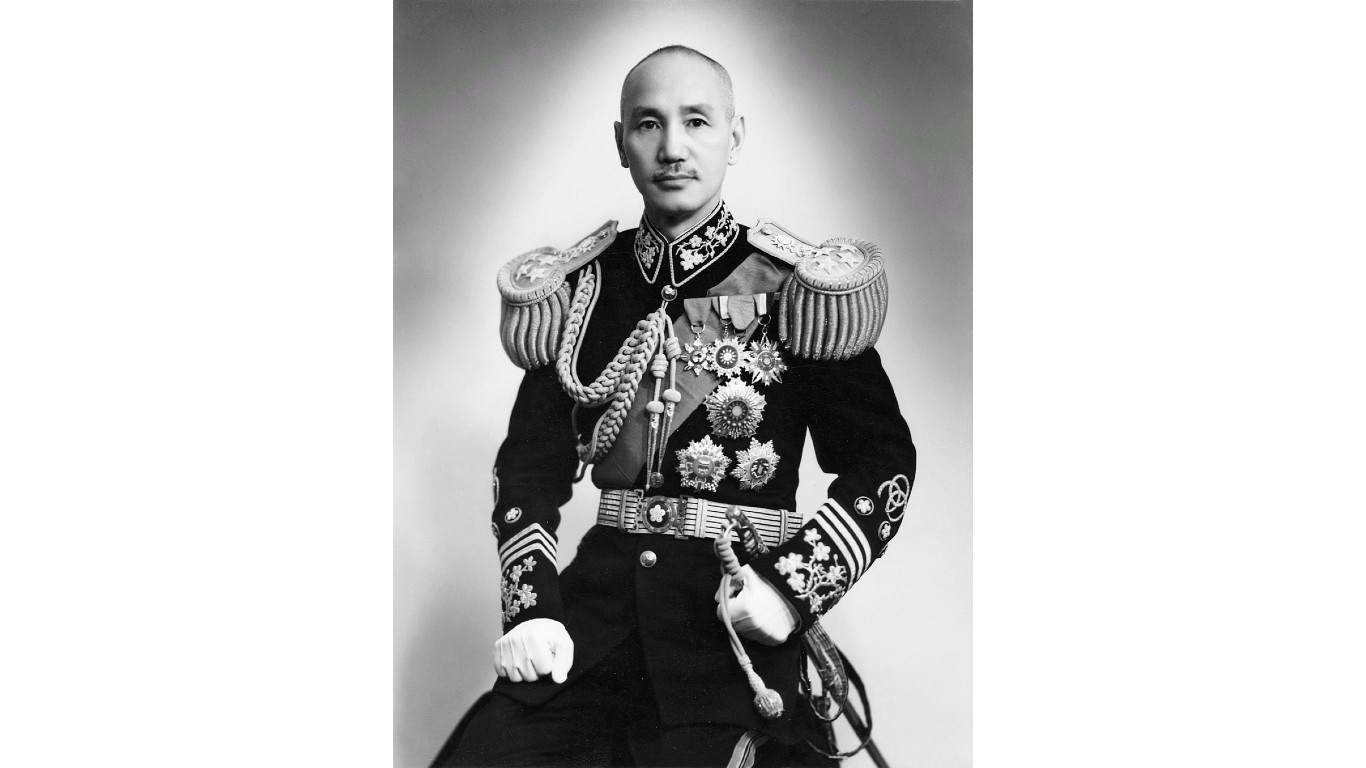
Appeals for foreign aid went largely unheeded save for the Soviet Union who dispatched advisors to China. The Chinese Communist Party (CCP) was founded in Shanghai in 1921 and the armed forces of the CCP, the People’s Liberation Army (PLA) was formed in 1927. Chiang Kai-shek assumed control of the nationalist Kuomintang (KMT) party in 1925. The CCP and KMT formed an uneasy alliance to take control of the country from the warlords. The expeditions were successful – the warlords were driven out and KMT troops marched on Beijing in 1928.
The CCP had outlived its usefulness to Chiang’s regime. He launched a massive purge to wipe out the communists, kicking off a civil war that lasted until World War Two.
1930s: The Long March, Japanese Aggression, and the Second United Front
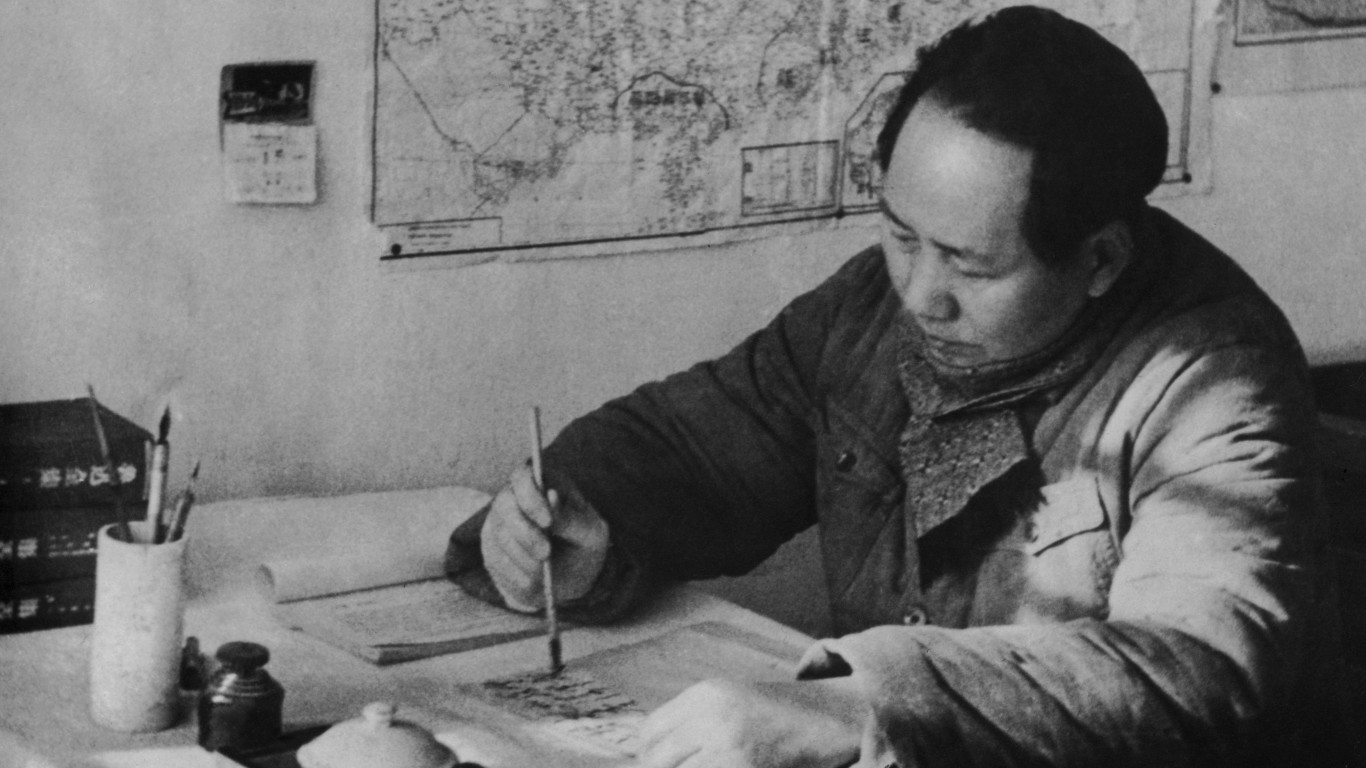
The PLA proved a tough nut to crack for Chiang’s forces. Under the leadership of Mao Zedong, the PLA used effective guerilla tactics to escape encirclement. Four expeditions failed to round up the PLA but a fifth came close to succeeding in 1934. After Mao was temporarily removed from command, the PLA fought using more conventional tactics and were soundly beaten and surrounded. On the brink of annihilation, 100,000 PLA soldiers broke out of the trap and began the “Long March” from the southwest to the relative safety of the north. At over 6000 miles (the equivalent of marching from New York to San Francisco and back), the Long March lived up to its name as a restored Mao led the remaining troops to Shaanxi.
As the communists narrowly avoided his grasp, even bigger problems loomed for Chiang Kai-Shek. In September 1931, the Japanese invaded Manchuria on a pretext and established a puppet state. Oddly enough the leader of that vassal state was Puyi, the deposed final emperor of the Qing. It would be only a matter of time before Japan attacked again.
1937-45: World War Two
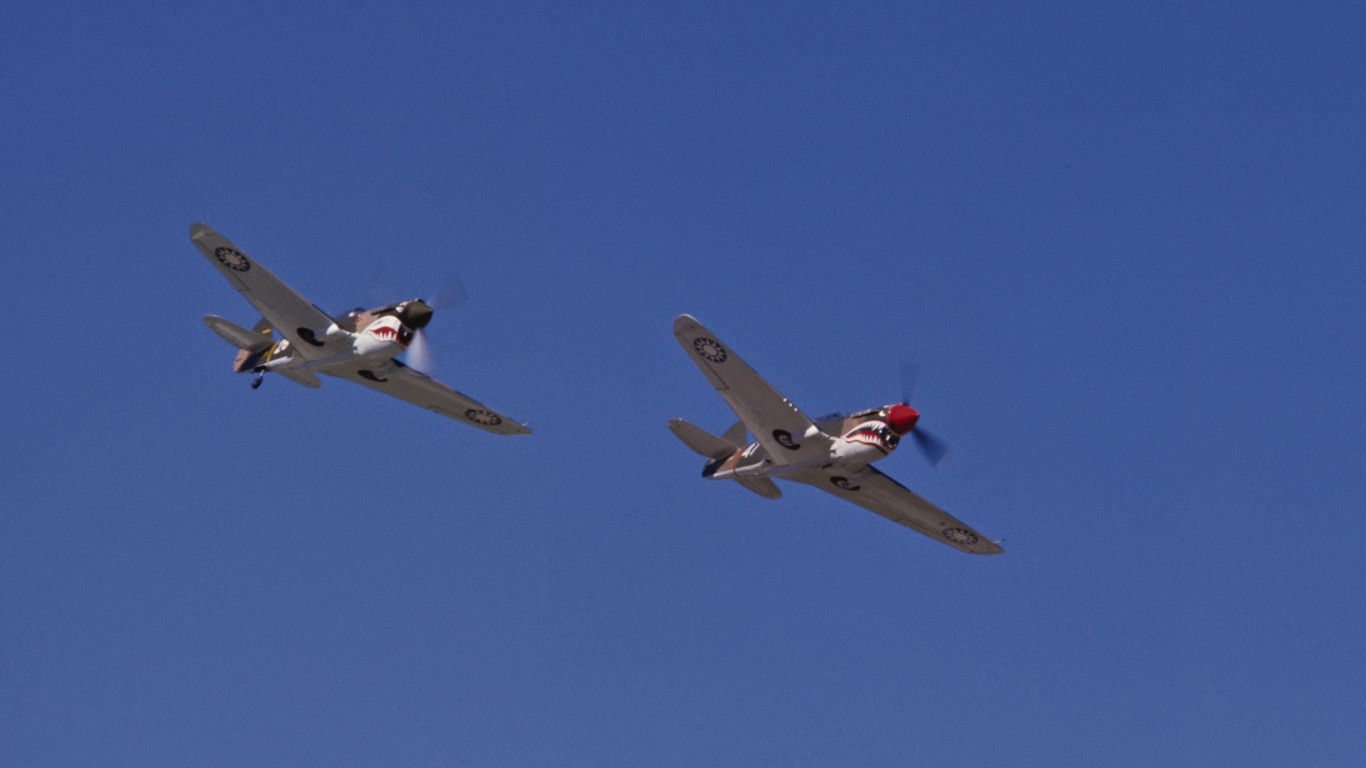
When did World War Two begin? Most will say Hitler’s invasion of Poland in September 1939 but there’s a good case to say it was already under way by then. The Second Sino-Japanese War broke out in 1937 after the Marco Polo Bridge Incident. The uneasy alliance between the KMT and CCP held as China ferociously resisted the Japanese onslaught. The United States sent limited aid, including a squadron of volunteer pilots, The Flying Tigers, using old P-40s.
After the attack on Pearl Harbor in December 1941, the United States entered World War Two, and the Sino-Japanese War was folded into the wider conflict. Ultimately, the Japanese couldn’t find a way to conclude the war with China. The county was too vast, the opposition too entrenched for the Japanese Empire to fully subdue.
1945: The Civil War Resumes
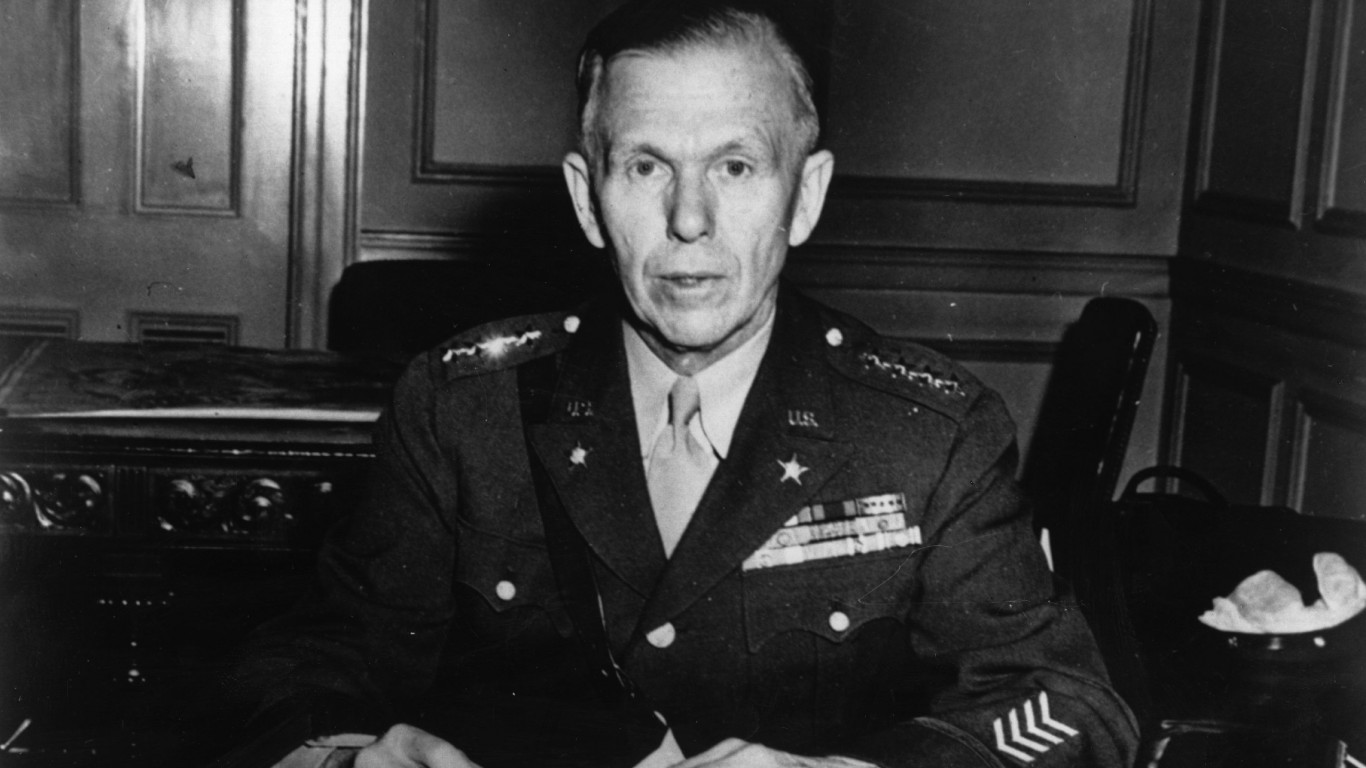
Japan’s surrender in 1945 ended World War Two but did not bring peace to China as the Civil War resumed. George C. Marshall (of Marshall Plan fame) went to China to broker a lasting peace between the two factions. However, the enmity between the CCP and KMT ran deep and the talks failed. The nationalists held a 3-to-1 numerical advantage and had American weapons but were hampered by rampant corruption, poor leadership, and low morale. The communists were better led, had strong grassroots support, and seized weapons from the retreating Japanese.
Forming Plans In Formosa
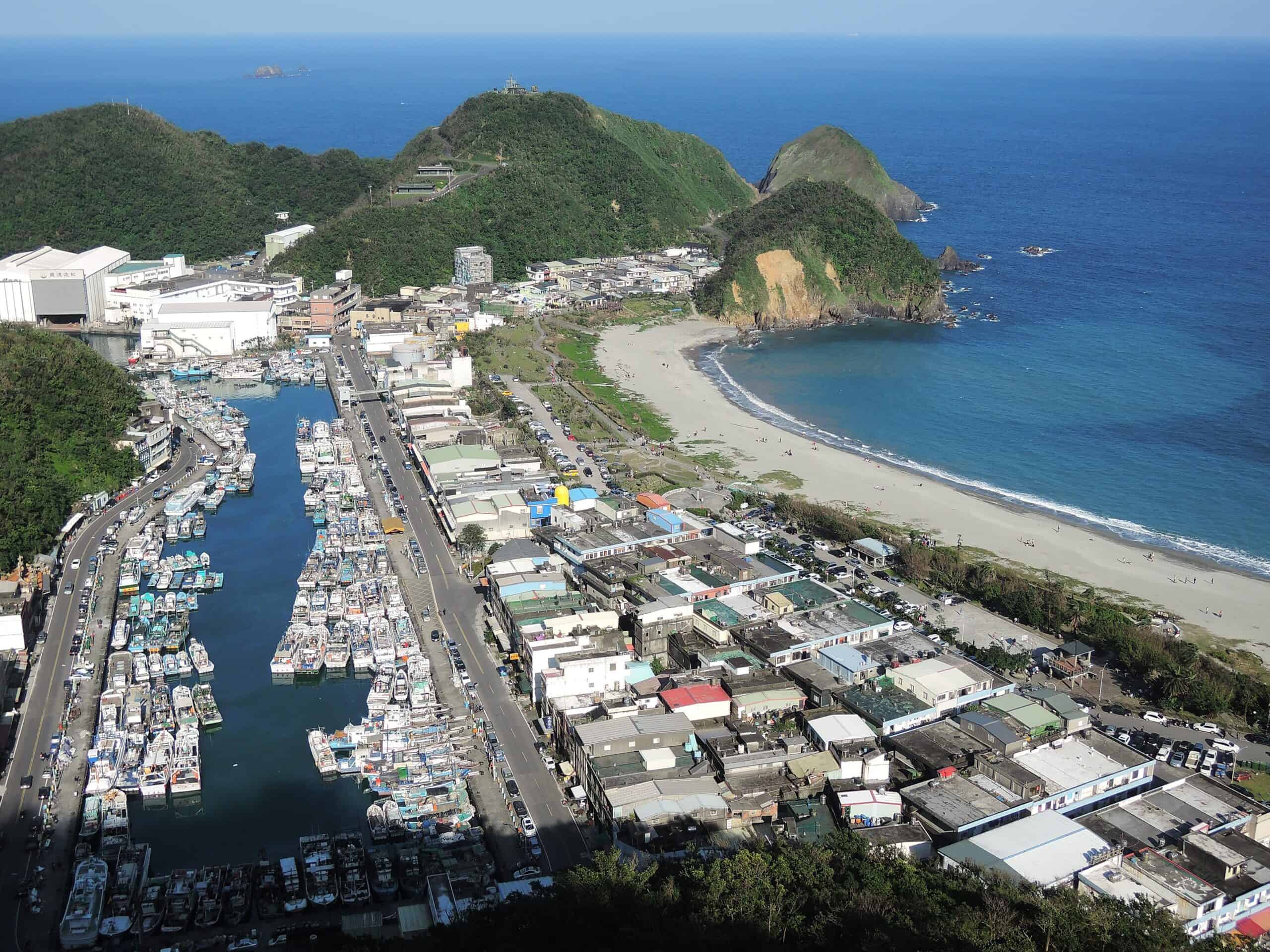
The nationalists earmarked Formosa (as Taiwan was known) as a possible evacuation site in 1947. Japan held Taiwan from 1895 to 1945 and after a half-century of foreign occupation, the local population initially welcomed the KMT as liberators. However, the new governor, Chen Yi, made the departing Japanese look benign in comparison. Taiwan was more developed than the mainland and nationalist troops looted local goods to sell for a huge profit on the mainland. On February 27, 1947, an incident involving a 40-year-old widow selling cigarettes sparked protests against the governor and his men. Thousands of protestors died after the army opened fire and launched a crackdown on political dissidents that persisted for decades. The impact of 228 and the subsequent White Terror is still felt in the present day.
1947-9: The Mainland is Lost
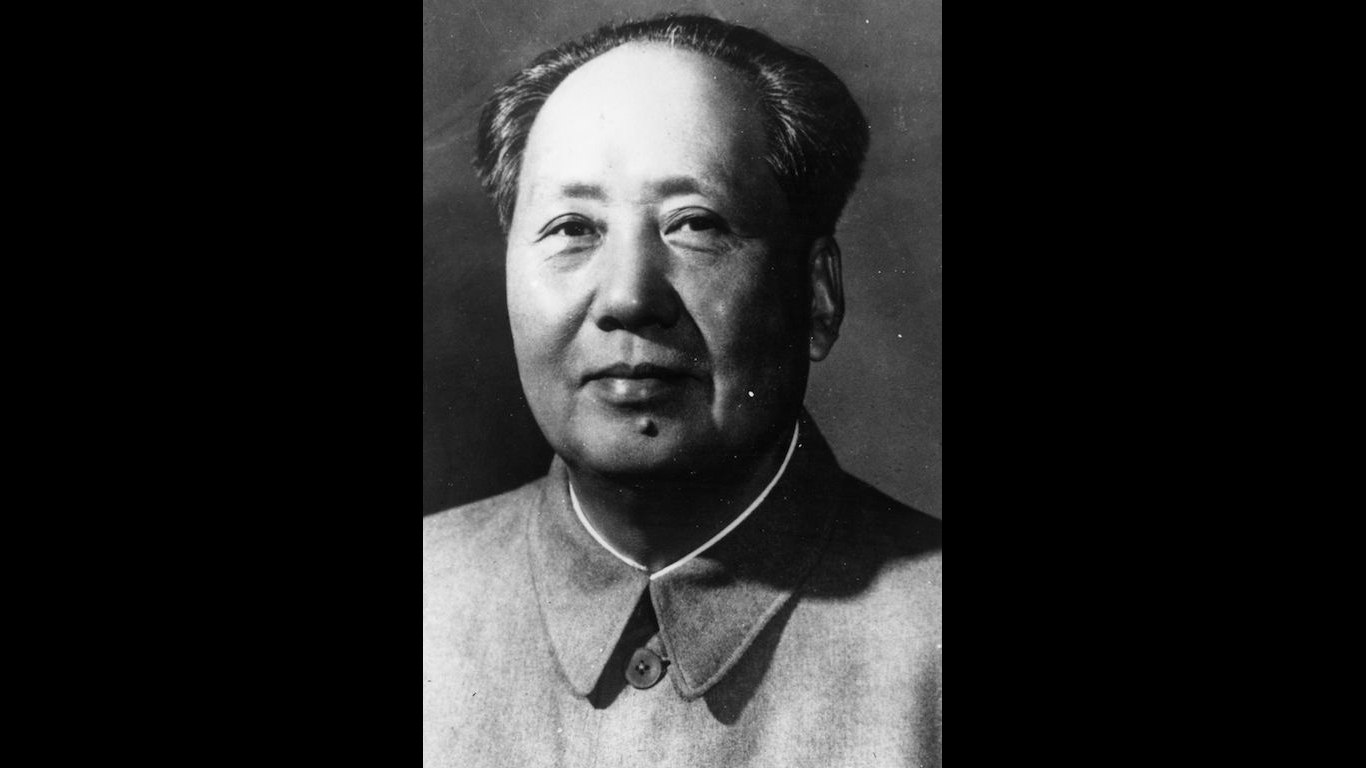
The ROC launched a major offensive to take the Communist’s capital at Yan’an in 1947 but the victory proved hollow. The CCP simply abandoned the city and made little real attempt to hold to any territory. As the 1949 American White Paper on China observed, the nationalists made the same strategic errors as the Japanese had in World War Two. The KMT was overextended and squandered its numerical advantage by attempting to hold too much. Conversely, the flexibility of Mao’s strategy allowed the PLA to converge on the weak points of the nationalist supply lines while avoiding strong defensive positions.
Ultimately, the trickle of losses became a flood. Entire divisions of the KMT army defected while key cities surrendered without a fight. Just over one million nationalists fled to Taiwan after the situation on the mainland became untenable. The People’s Republic of China was formed on October 1, 1949.
1950s: Crisis in the Strait
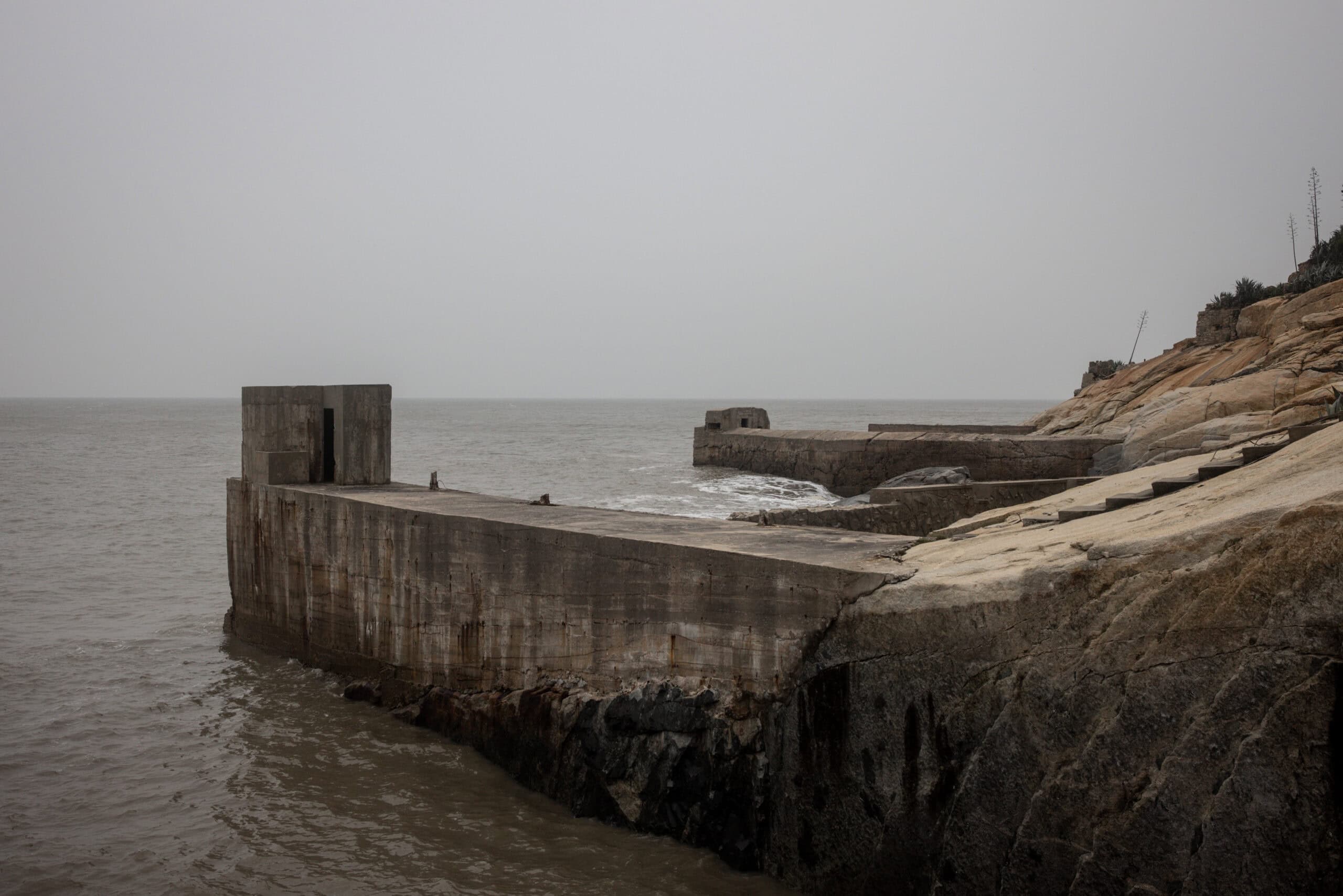
The Truman Administration sent aid to the ROC in 1948 but was willing to let the PRC finish the job in 1949. However, the nearby island of Kinmen -just six miles from the mainland- held off a PLA assault in October 1949 and is still under the control of the ROC. The outbreak of the Korean War hardened American attitudes toward Beijing and the Truman Administration sent the Seventh Fleet to the Taiwan Strait to prevent the PRC from invading. The United States refused to recognize the PRC for 30 years. As far as Washington (and most of the world) was concerned, Chiang Kai-shek was the leader of the “real” China.
After the Korean War ended and the Seventh Fleet withdrew, the PLA renewed its attack on Kinmen in September 1954. The United States considered several options, including nuclear weapons, to respond to the crisis. Ultimately, Congress passed the “Formosa Resolution” in January 1955 giving the Eisenhower Administration the authority to defend Taiwan. Talks in Indonesia in 1955 de-escalated the crisis. Attacks resumed in 1958 until American supplies reached the islands.
1970 – 1991: Thawing Relations
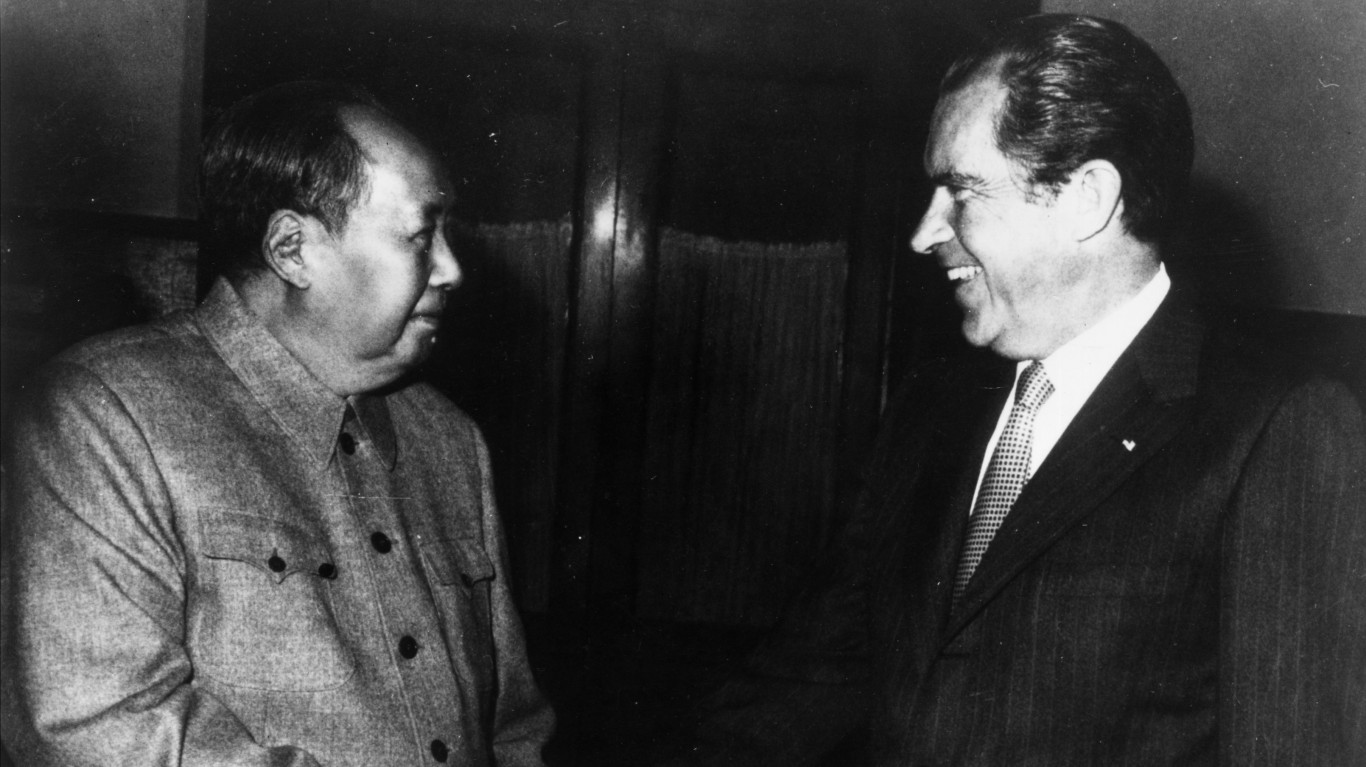
In 1971, the UN passed Resolution 2758, recognizing the People’s Republic of China as the only legitimate representative of China rather than Chiang Kai-shek’s regime in Taipei. A split between the PRC and the Soviet Union opened the way for the United States and China to normalize relations. Henry Kissinger secretly visited Beijing in 1971 to broker a meeting between Chinese leader Zhou Enlai and President Richard Nixon. The historic summit took place a year later.
A handshake between the two leaders carried special significance for Zhou Enlai as he’d been snubbed by US Secretary of State John Foster Dulles in 1954. The President also met with Mao Zedong on a trip that caused a fundamental shift in Sino-American relations. The United States accepted Beijing’s “One China” policy – “there is but one China and Taiwan is part of China” in 1972. However, it wasn’t until 1979 that the United States and China finally recognized each other and resumed formal diplomatic ties. At the same time, the 1979 Taiwan Relations Act showed that Washington hadn’t abandoned Taipei entirely.
Economic ties between Taiwan and China grew in the 1980s. Taiwan democratized in the 1980s, shifting away from authoritarianism and martial law. Taipei adopted a more conciliatory approach to Bejing, allowing for more cross-strait economic cooperation. Taiwan prospered in the 1980s and was one of the world’s fastest-growing economies. In 1991, the Republic of China shifted its position toward the People’s Republic of China. The CCP was no longer a rebel organization to be brought to heel in the future but the true authority ruling China.
President Lee Teng-hui put it simply:
From now on, we must accept the reality that the Communists control the mainland.
1996: The Third Strait Crisis
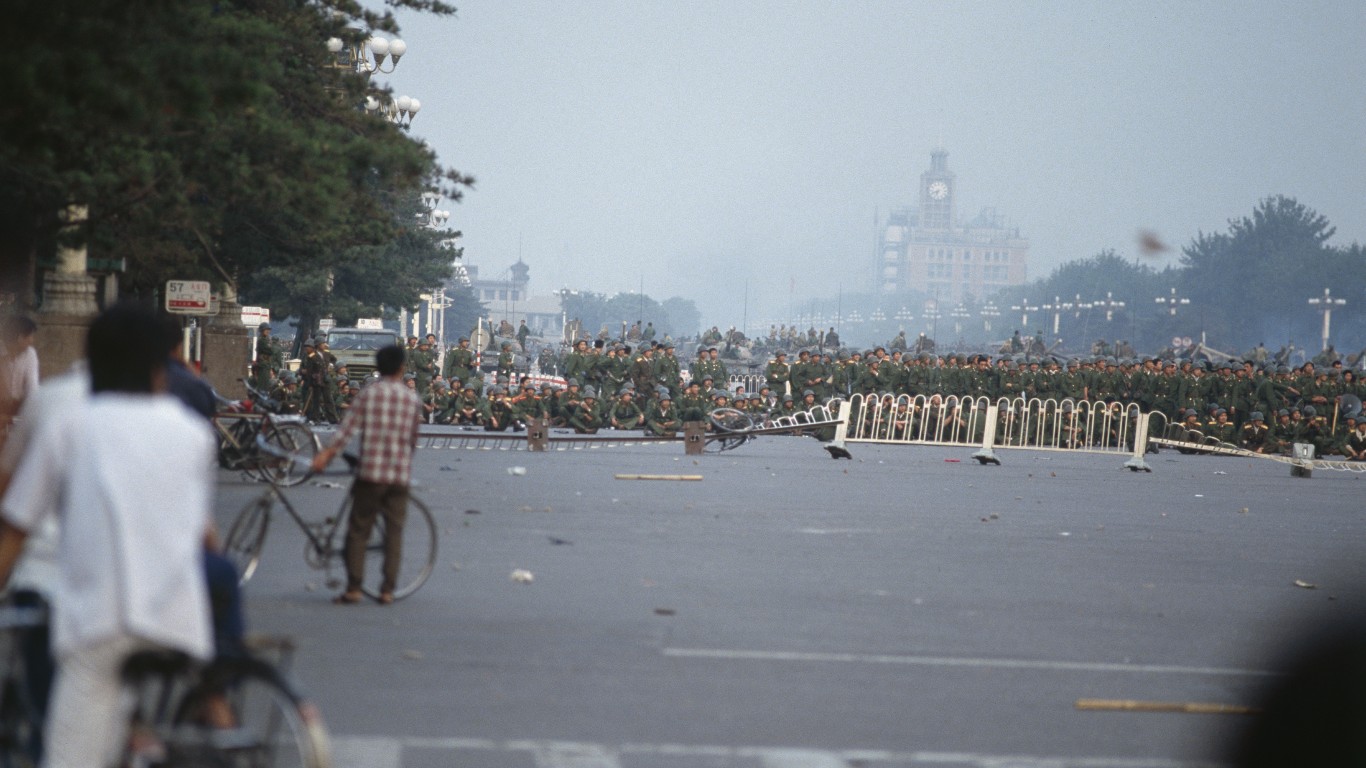
The harsh crackdown on protestors in Tiananmen Square in 1989 damaged China’s international standing and had a political effect on Taiwan. The pro-independence Democratic Progressive Party (DPP) made serious gains in the early 1990s. With the political landscape shifting away from peaceful unification, another crisis in the strait loomed.
The flashpoint was rather innocuous at first glance. Lee Teng-hui, President of Taiwan, was invited to speak at Cornell, where he’d gained a PhD in the 1960s. The Clinton Administration refused to grant a VISA as that would have been seen as a violation of the ‘One China’ policy. However, Congress passed a resolution to allow Lee to travel to the United States in 1995. Beijing reacted by conducting missile tests and naval exercises in the Taiwan Strait. The US responded by dispatching two aircraft carriers in March 1996 to the strait. This was the first major show of strength by the United States since the crises of the 1950s. The gambit worked and tensions cooled. However, the PRC learned some key lessons from the experience.
The Anti-Secession Law
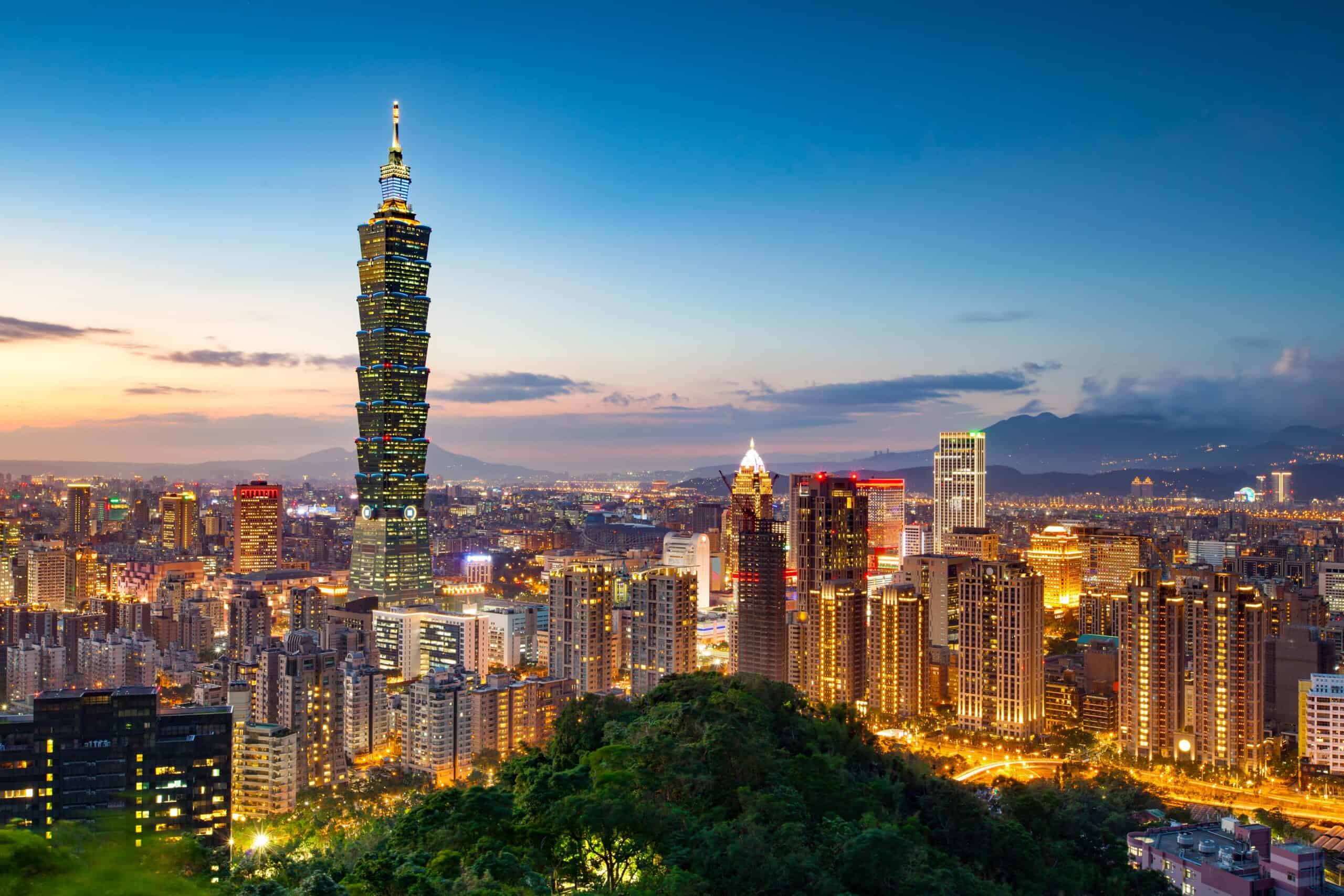
Beijing passed the anti-secession law in March 2005 which explicitly stated China’s position on Taiwan:
Taiwan is part of China. The state shall never allow the “Taiwan independence” secessionist forces to make Taiwan secede from China under any name or by any means.
Any declaration of independence by Taiwan would be tantamount to a declaration of war in China’s eyes. While the text of the law calls for peaceful unification with Taiwan, that appears increasingly unlikely. Opinion polls show that a clear majority of the population in Taiwan considers themselves Taiwanese and that feeling is strongest among younger people. Most favor maintaining the status quo of de facto independence without unnecessarily provoking Beijing by formally declaring it. The United States continues to operate a policy of “strategic ambiguity” towards the China-Taiwan question. Washington avoids specifically promising to intervene if China attacked Taiwan.
2027-2030: The Window of Opportunity?
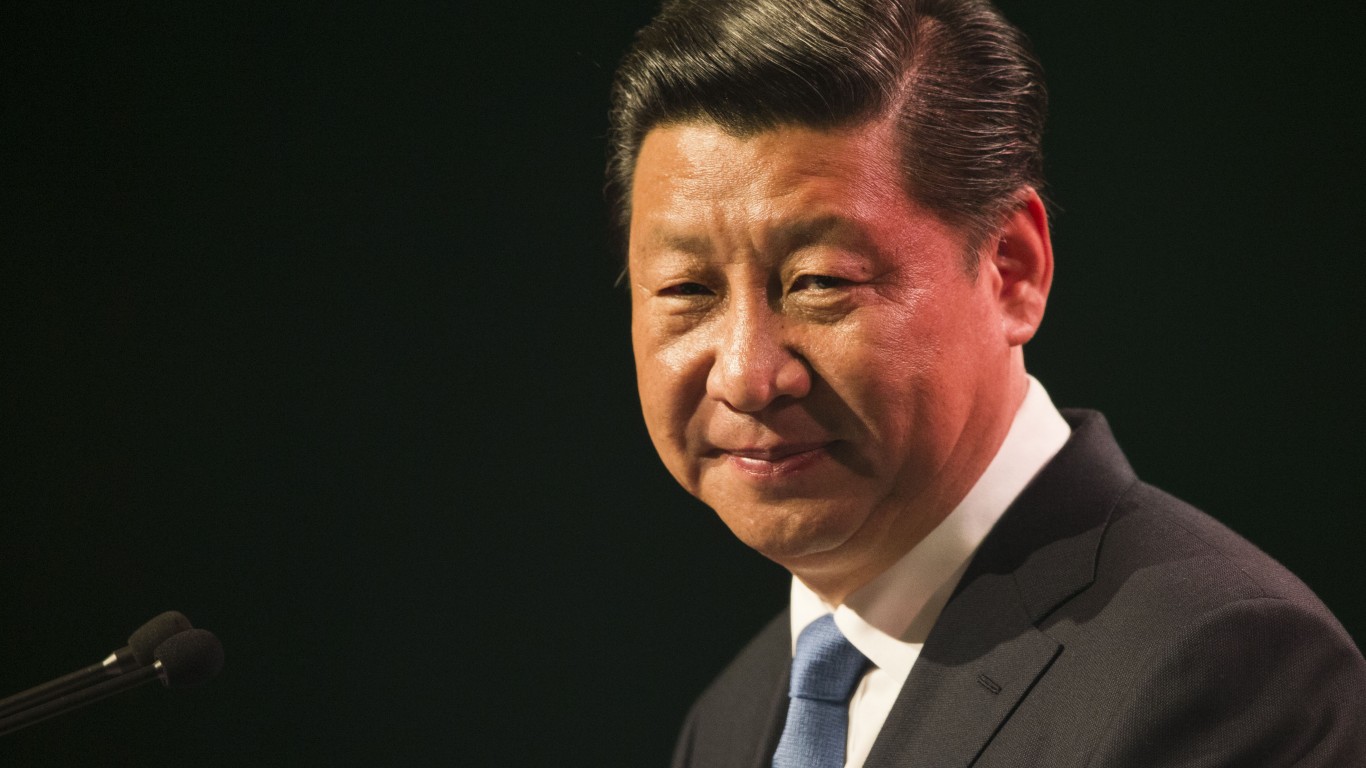
China has invested huge sums in its military since the turn of the millennium, especially in anti-access and aerial denial (A2/AD) munitions which would be key to countering an American naval intervention. This build-up is part of a modernization program to make the PLA “a world-class military” by 2049. As it stands, the PLA would be unlikely to succeed in an invasion of Taiwan if it were launched today. However, the PLA is expected to have that capability by 2027. Chinese Premier Xi Jinping hopes to cement his legacy by bringing Taiwan back into the fold and non-peaceful means are certainly on the table. With a looming demographic crisis and an aging leader, there is a sense in Beijing that 2027-2030 may very well be the last chance to take the island.
To mitigate the massive discrepancy in numbers and firepower, Taiwan favors the “porcupine strategy” to hold off an invasion from China. In simple terms, the idea is to inflict the maximum amount of pain on the invader by stinging it with quills or in this case, lower-tech smaller arms. A similar approach worked in Ukraine and with the major geographical advantages of an island, an invasion of Taiwan would be an immensely difficult undertaking.
The United States sent military aid to Taiwan in a notable policy shift. The 2023 package was modest but represented the first time the Foreign Military Financing (FMF) program was used to support an officially non-sovereign state. A much larger aid package arrived in April 2024 to further bolster Taiwan’s defenses. It’s still unclear just how far the US would go to back Taiwan, if at all, but the shipments of arms signal intent to avert war.
Conclusion
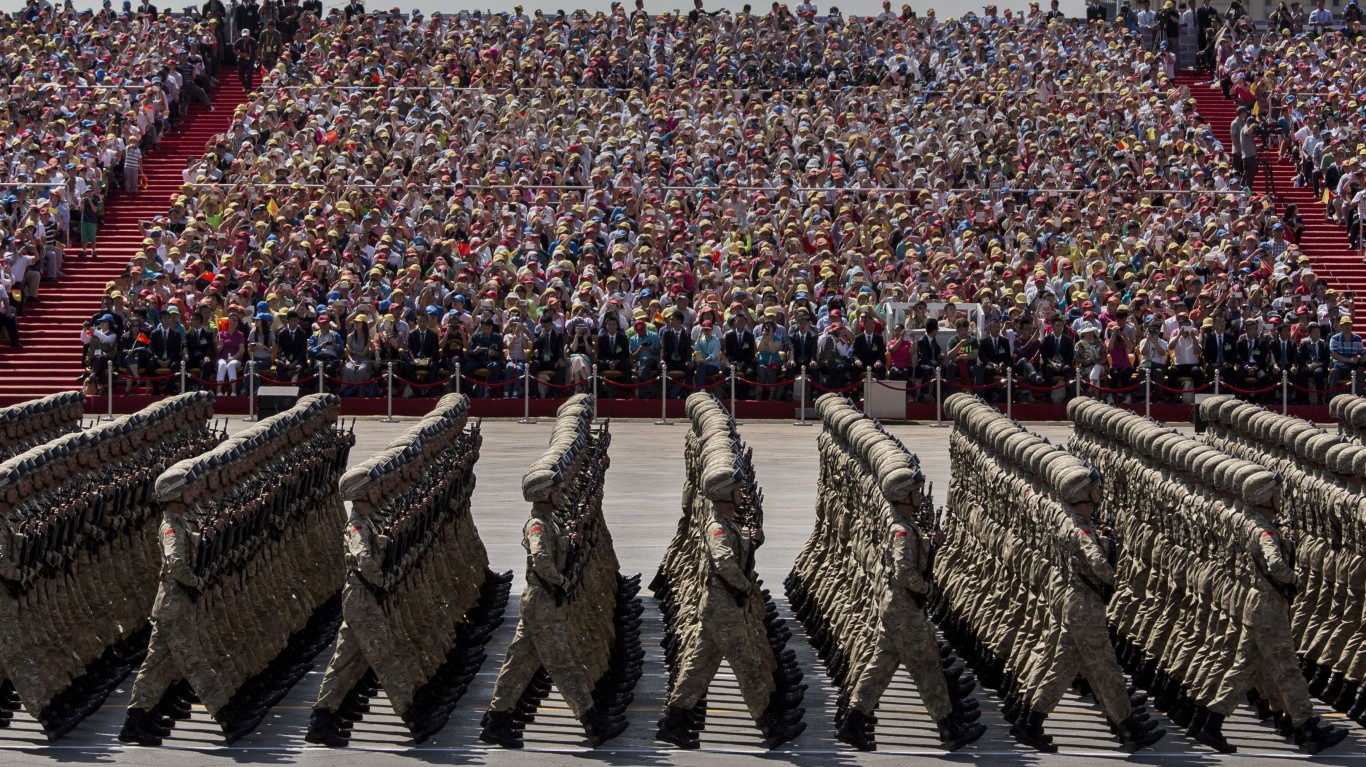
The uneasy status quo between the People’s Republic of China and the Republic of China has held since 1949. However, Taiwan’s de facto independence hasn’t been this threatened since the end of the Chinese Civil War. The animosity between Beijing and Taipei today stems back almost a century of mutual distrust, betrayal, and violence. The triumph of the People’s Republic of China in 1949 was an incomplete victory that Xi Jinping is desperate to put right. China will likely have the means to take Taiwan by force in a few years but there’s no guarantee an invasion will either happen or succeed. It will be a costly and risky endeavor for such an inexperienced military.
For the United States, preventing war is key. War with China would be disastrous as would allowing Taiwan to fall. Effective deterrence requires credibility and while the aid packages are a step in the right direction, far more will be needed to convince Beijing the prize isn’t worth the attempt.
Get Ready To Retire (Sponsored)
Start by taking a quick retirement quiz from SmartAsset that will match you with up to 3 financial advisors that serve your area and beyond in 5 minutes, or less.
Each advisor has been vetted by SmartAsset and is held to a fiduciary standard to act in your best interests.
Here’s how it works:
1. Answer SmartAsset advisor match quiz
2. Review your pre-screened matches at your leisure. Check out the advisors’ profiles.
3. Speak with advisors at no cost to you. Have an introductory call on the phone or introduction in person and choose whom to work with in the future
Thank you for reading! Have some feedback for us?
Contact the 24/7 Wall St. editorial team.



